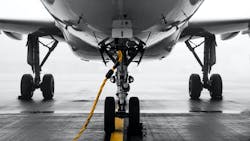Using ‘what-if’ scenarios for more than just MRO
FORT ATKINSON, Wisc., - The past two years have been a steep learning curve for the aviation industry in its ability to predict and adapt to changing travel and fleet needs. Quick decisions have often been required following almost daily industry announcements, and long-term plans evaluated in accordance with the ever-changing circumstances, Phil Cole reports for AviationPros. Continue reading original article.
The Military & Aerospace Electronics take:
2 March 2022 - As a result, digital solutions have increasingly been introduced in all areas of the industry, and MRO planning is no exception. Digitalizing MRO operations using powerful model-based AI technology enables a more holistic approach and allows planners to explore multiple real-world ‘what-if’ scenarios quickly and easily. It can model a whole MRO operation, regardless of its complexity or processes, in an intuitive, highly scalable, and secure system enabling a broad range of users to collaborate and make better decisions.
Creating these simulations enables planners to see the impact of their decisions on future fleet availability. This can identify and mitigate potential risks and also help understand the effect of changes to independent variables and future consequences or side effects. This results in the ability to adjust decisions and plan accordingly, optimizing key subsystems and fleet availability for optimal operational performance and confidence making in strategic goals.
Related: Maintain helicopter health with HUMS
Related: When Boeing 787 deliveries resume, FAA will certify each plane itself
Related: Collins Aerospace announces MRO agreements at Singapore Airshow
Jamie Whitney, Associate Editor
Intelligent Aerospace
